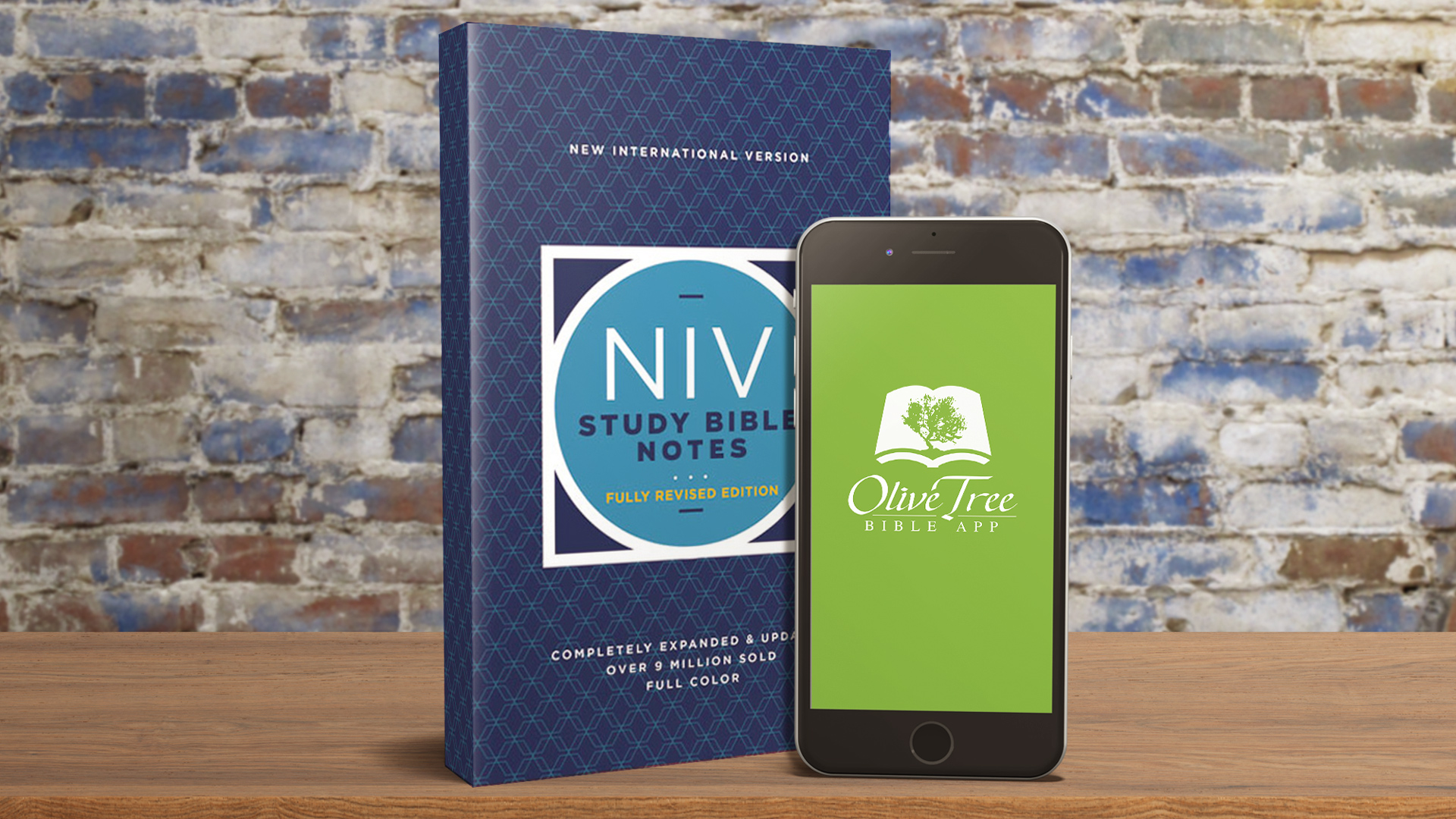Wanting to know more about Acts? Learn who wrote Acts, when it was written, where, why, and all sorts of interesting information.
This entire post is taken directly from the NIV Study Bible, Fully Revised Edition, a fantastic resource for any reader of God’s Word.
WHO WROTE ACTS?
Although the author does not name himself, both external and internal evidence leads to the conclusion that the author was Luke.
The earliest of the external testimonies appears in the Muratorian
Canon (c. AD 170), where the explicit statement is made that Luke was
the author of both the third Gospel and the “Acts of All the Apostles.”
Eusebius (c. 325) lists information from numerous sources to identify
the author of these books as Luke (Ecclesiastical History, 3.4).
Within the writing itself are some clues as to who the author was:
(1) A companion of Paul.
In the description of the happenings in Acts, certain passages make use of the pronoun “we.” At these points the author includes himself as a companion of Paul in his travels (16:10–17; 20:5–21:18; 27:1–28:16; 27:1). A historian as careful with details as this author proves to be would have good reason for choosing to use “we” in some places and “they” elsewhere. The author was therefore probably present with Paul at the particular events described in the “we” sections.
These “we” passages include the period of Paul’s two-year imprisonment at Rome (ch. 28). During this time Paul wrote, among other letters, Philemon and Colossians. In them he sends greetings from his companions, and Luke is included among them (see Col 4:9–17; Phm 23–24). In fact, after eliminating those who, for one reason or another, would not fit the requirements for the author of Acts, Luke is left as the most likely candidate.
(2) A physician.
Paul describes Luke as a “doctor” in Col 4:14. Although it cannot be proved that the author of Acts was a physician simply from his vocabulary, the words he uses and the traits and education reflected in his writings fit well his role as a physician. It is true that the doctor of the first century did not have as specialized a vocabulary as that of doctors today, but there are some usages in Luke and Acts that seem to suggest that a medical man could have been the author of these books.
(3) A historian.
In the prologue to his Gospel, Luke claims to have carefully investigated every- thing he writes about and to have followed eyewitness accounts. This is confirmed in Acts, where Luke demonstrates remarkable accuracy with reference to persons and places.

WHEN WAS ACTS WRITTEN?
Two main dates have been suggested for the writing of this book: (1) c. AD 63, soon after the last event recorded in the book, and (2) c. 70 or even later.
The earlier date is supported by:
(1) Silence about later events.
While arguments from silence are not conclusive, it is perhaps significant that the book contains no allusion to events that happened after the close of Paul’s two-year imprisonment in Rome: e.g., the burning of Rome and the persecution of the Christians there (AD 64), the martyrdom of Peter and Paul (possibly 67) and the destruction of Jerusalem (70).
(2) No outcome of Paul’s trial.
If Luke knew the outcome of the trial Paul was waiting for (see 28:30), why did he not record it at the close of Acts? Perhaps it was because he had brought the history up to date.
Those who prefer the later date hold that 1:8 reveals one of the purposes Luke had in writing his history and shows that this purpose influenced the way the book ended. Luke wanted to show how the church penetrated the world of his day in ever-widening circles (Jerusalem, Judea, Samaria, the ends of the earth) until it reached Rome, the world’s political and cultural center. On this understanding, mention of the martyrdom of Paul (c. AD 67) and of the destruction of Jerusalem (70) was not pertinent. This would allow for the writing of Acts c. 70 or even later.
RECIPIENT
The recipient of the book, Theophilus, is the same person addressed in the first volume, the Gospel of Luke. His name means “one who loves God” and almost certainly refers to a particular person rather than to lovers of God in general. The use of “most excellent” with the name further indicates an individual and supports the idea that he was a Roman official or at least of high position and wealth. He was possibly Luke’s patron, responsible for seeing that the writings were copied and distributed. Such a dedication to the patron was common at that time.
IMPORTANCE
The book of Acts provides a bridge for the writings of the NT. As a second volume to Luke’s Gospel, it joins what Jesus “began to do and to teach” (1:1) as told in the Gospels with what he continued to do and teach through the apostles’ preaching and the establishment of the church. Besides linking the Gospel narratives on the one hand and the apostolic letters on the other, it supplies an account of the life of Paul, from which we can learn the setting for his letters.
Geographically, its story spans the lands between Jerusalem, where the church began, and Rome, the political center of the empire.
Historically, it provides a selective account of the first 30 years of the church. It is also a bridge that ties the church in its beginning with each succeeding age.
The book reveals the potential of the church when it is guided and empowered by the Holy Spirit.
THEME AND PURPOSE OF ACTS
The theme of the work is best summarized in 1:8. It was ordinary procedure for a historian at this time to begin a second volume by summarizing the first volume and indicating the contents anticipated in his second volume. Luke summarized his first volume in 1:1–3; the theme of his second volume is presented in the words of Jesus: “You will be my witnesses in Jerusalem, and in all Judea and Samaria, and to the ends of the earth” (1:8). This is, in effect, an outline of the book of Acts (see Plan and Outline).
The main purposes of the book appear to be:
(1) To demonstrate the unstoppable progress of the gospel.
This progress is both geographic and ethnic. Luke seeks to show how the gospel moved from its Jewish roots in Jerusalem outward into the Gentile world. His overriding purpose is to demonstrate that the advance of the church is the work of God and the fulfillment of his plan to bring salvation to the ends of the earth. The church, made up of Jews and Gentiles and empowered and guided by the Holy Spirit, represents the people of God in the present age.
(2) To present a history.
The significance of Acts as a historical account of Christian origins should not be underestimated. It tells of the founding of the church, the spread of the gospel, the beginnings of congregations, and evangelistic efforts in the apostolic pattern. One of the unique aspects of Christianity is its firm historical foundation. The life and teachings of Jesus Christ are established in the four Gospel narratives, and the book of Acts provides a coordinated account of the beginning and spread of the church as the result of the work of the risen Lord and the Holy Spirit through the apostles.
(3) To give a defense.
One finds embedded in Acts a record of Christian defenses made to both Jews (e.g., 4:8–12) and Gentiles (e.g., 25:8–11), with the underlying purposes of confirmation for believers and conversion of unbelievers. It shows how the early church coped with pagan and Jewish thought, the Roman government and Hellenistic society.
As a second volume to Luke’s Gospel, the book of Acts joins what Jesus “began to do and to teach” as told in the Gospels with what he continued to do and teach through the apostles’ preaching and the establishment of the church.

CHARACTERISTICS OF ACTS
(1) Accurate historical detail.
The account covers a period of about 30 years and reaches across the lands from Jerusalem to Rome. Luke’s description of these times and places is filled with all kinds of people and cultures, a variety of governmental administrations, court scenes in Caesarea, and dramatic events involving such centers as Antioch, Ephesus, Athens, Corinth and Rome. Barbarian country districts and Jewish centers are included as well. Yet in each instance archaeological findings reveal that Luke uses the proper terms for the time and place being described. Hostile criticism has not succeeded in disproving the accuracy of Luke’s political and geographic designations.
(2) Literary excellence.
Not only does Luke have a large vocabulary compared with other NT writers, but he also uses these words in literary styles that fit the cultural settings of the events he is recording. At times he employs fine literary Greek; at other times the Palestinian Aramaic of the first century shows through his expressions. This is an indication of Luke’s careful practice of using language appropriate to the time and place being described. Aramaisms are used when Luke is describing happenings that took place in the Holy Land (chs. 1–12). When, however, Paul departs for Hellenistic lands beyond the territories where Aramaic-speaking people live, Aramaisms cease.
(3) Dramatic description.
Luke’s skillful use of speeches contributes to the drama of his narrative. Not only are they carefully spaced and well balanced between Peter and Paul, but the speeches of a number of other individuals add variety and vividness to the account (see 5 below). Luke’s use of details brings the action to life. Nowhere in ancient literature is there an account of a shipwreck superior to Luke’s with its nautical details (ch. 27). The book is vivid and fast-moving throughout.
(4) Realistic portrayal of the church.
Luke demonstrates the veracity of his account by recording the failures as well as the successes, the bad as well as the good, in the early church. Not only is the discontent between the Hellenistic Jews and the Hebraic Jews recorded (see 6:1) but also the discord between Paul and Barnabas (see 15:39). Divisions and differences are recognized (15:2; 21:20–21).
(5) Effective use of speeches.
One of the distinguishing features of the book of Acts is its speeches. They may be classified as follows: (1) evangelistic—two types: to Jews and God-fearers (2:14–40; 3:12–26; 4:8–12; 5:29–32; 10:34–43; 13:16–41), to pagans (17:22–31); (2) deliberative (1:16–17, 20–22; 15:7–11, 13–21); (3) apologetic (7:2–52; 22:1–21; 23:1–6; 24:10–21; 25:8, 10; 26:2–23; 28:17–20, 21–22, 25–28); (4) hortatory (20:18–35).
The speeches are obviously not verbatim reports; any of them can be read in a few minutes. We know, e.g., that Paul sometimes preached for several hours (see 20:7, 9; 28:23). However, studies of these speeches (speakers, audiences, circumstances, language and style of writing) give us reason to believe that they are accurate summaries of what was actually said.
PLAN AND OUTLINE OF ACTS
Luke weaves together different interests and emphases as he relates the beginnings and expansion of the church. The design of his book revolves around (1) key persons: Peter and Paul; (2) important topics and events: the role of the Holy Spirit, pioneer missionary outreach to new fields, conversions, the growth of the church and life in the Christian community; (3) significant problems: conflict between Jews and Gentiles, persecution of the church by some Jewish elements, trials before Jews and Romans, confrontations with Gentiles and other hardships in the ministry; (4) geographic advances: five significant stages (see the quotations in the outline).
- The Christian Mission to the Jews and Beyond (chs. 1–12)
- The Church in Jerusalem (1:1-6:7)
- Introduction (1:1–2)
- Christ’s resurrection ministry and ascension (1:3–11)
- The period of waiting for the Holy Spirit and choosing Matthias to replace Judas (1:12–26)
- The filling with the Spirit and Peter’s sermon on the day of Pentecost (ch. 2)
- The healing of the lame man and Peter’s resulting message (chapter 3)
- The arrest of Peter and John (4:1-31)
- The community of goods (4:32–5:11)
- The arrest of the 12 apostles (5:12–42)
- The choice of the Seven (6:1–7)
- The Church in Judea, Galilee and Samaria (6:8-9:31)
- Stephen’s ministry, arrest and martyrdom (6:8—8:1a)
- The scattering of the Jerusalem believers (8:1b—4)
- Philip’s ministry (8:5–40)
- In Samaria (8:5–25)
- To the Ethiopian eunuch (8:26–40)
- Saul’s conversion (9:1–31)
- Advances in Israel and Syria (9:32—12:24)
- Peter’s ministry on the Mediterranean coast (9:32—11:18)
- With Aeneas and Dorcas (9:32–43)
- With Cornelius (ch. 10)
- Retelling the story about Cornelius back in Jerusalem (11:1–18)
- The new Gentile church in Antioch (11:19–30)
- Herod’s persecution of the church and his subsequent death (ch. 12)
- Peter’s ministry on the Mediterranean coast (9:32—11:18)
- The Church in Jerusalem (1:1-6:7)
- The Christian Mission to the Gentiles (12:25—28:31)
- Paul’s First Missionary Journey and the Apostolic Council (12:25—16:5)
- Paul and Barnabas commissioned (12:25—13:3)
- On Cyprus (13:4–12)
- In Pisidian Antioch (13:13–52)
- In Iconium (14:1–7)
- In Lystra and Derbe (14:8–21a)
- Retracing their steps (14:21b–28)
- The Jerusalem Council (15:1–35)
- New companions and more follow-up (15:36—16:5)
- Paul’s Second and Third Missionary Journeys (16:6—19:20)
- New frontiers: moving westward (16:6–10)
- In Philippi (16:11–40)
- In Thessalonica (17:1–9)
- In Berea (17:10–15)
- In Athens (17:16–34)
- In Corinth (18:1–18a)
- Transitioning to Ephesus (18:18b-27)
- In Ephesus (19:1–20)
- Paul’s Final Travels to Jerusalem and to Rome (19:21—28:31)
- The Riot in Ephesus that leads Paul to leave (19:21–44)
- Through Macedonia and Greece (20:1–6)
- Eutychus raised from the dead at Troas (20:7–12)
- Paul’s farewell to the Ephesian leaders (20:13–38)
- On to Jerusalem (21:1–16)
- Paul’s imprisonment in Jerusalem (21:17—23:35)
- Arrest (21:17—22:29)
- Trial before the Sanhedrin (22:30—23:11)
- Transfer to Caesarea (23:12–35)
- Paul’s imprisonment in Caesarea (chs. 24–26)
- Trial before Felix (ch. 24)
- Trial before Festus (25:1–12)
- Hearing before Festus and Agrippa (25:13—26:32)
- Voyage to Rome (27:1—28:15)
- Two years under house arrest in Rome (28:16–31)
- Paul’s First Missionary Journey and the Apostolic Council (12:25—16:5)

LEARN MORE ABOUT ACTS… AND THE REST OF THE BIBLE
All of the content in this post came from the NIV Study Bible, Fully Revised Edition. If you’re looking for a study Bible that can give you quick information on each book of the Bible through introductions, notes, and images — this is it. Grab it now on our website.




0 Comments